Note: I am adding a separate answer because though the answers that I linked in comment seem to give a solution, this one is a bit more complex due to the presence of border also along with the border-radius.
The shape can be created by using the following parts:
- One main container element which is positioned relatively.
- Two pseudo-elements which are roughly half the width of parent element. One element is skewed to produce the skewed left side whereas the other is not skewed.
- The skewed pseudo-element is positioned at the left while the normal element is positioned at the right of the container element.
- The skewed pseudo-element has only top, left and bottom borders. The right border is omitted as it would come right in the middle of the shape. For the pseudo-element that is not skewed, the left border is avoided for the same reason.
- Left border of the skewed pseudo-element is a bit more thicker than other borders because skew makes the border look thinner than it actually is.
I have also added a hover effect to the snippet to demonstrate the responsive nature of the shape.
.outer {
position: relative;
height: 75px;
width: 300px;
text-align: center;
line-height: 75px;
color: white;
text-transform: uppercase;
}
.outer:before,
.outer:after {
position: absolute;
content: '';
top: 0px;
height: 100%;
width: 55%;
background: purple;
border: 2px solid white;
border-left-width: 3px;
z-index: -1;
}
.outer:before {
left: 0px;
border-radius: 20px;
border-right: none;
transform: skew(20deg);
transform-origin: top left;
}
.outer:after {
right: 0px;
border-top-right-radius: 20px;
border-bottom-right-radius: 20px;
border-left: none;
}
/* Just for demo of responsive nature */
.outer{
transition: all 1s;
}
.outer:hover{
height: 100px;
width: 400px;
line-height: 100px;
}
body{
background: lightblue;
}
<div class='outer'>
Call me back
</div>
Advantage:
- A big advantage of this approach is that it provides a graceful fallback. That is, in non CSS3 compliant browsers it would look like normal button with rounded corners (and no slanted side).
- The page (or container element) background need not be a solid color.
- The shape itself can have non-solid colors (that is, images or gradients) as background. It would need some extra tweaking but the approach itself will remain same.
In the below snippet, I have given each component a different color to visually illustrate how the shape is achieved:
.outer {
position: relative;
height: 75px;
width: 300px;
text-align: center;
line-height: 75px;
color: white;
text-transform: uppercase;
}
.outer:before,
.outer:after {
position: absolute;
content: '';
top: 0px;
height: 100%;
width: 55%;
background: purple;
border: 2px solid white;
border-left-width: 3px;
z-index: -1;
}
.outer:before {
left: 0px;
border-radius: 20px;
border-right: none;
transform: skew(20deg);
transform-origin: top left;
background: seagreen;
border-color: red;
}
.outer:after {
right: 0px;
border-top-right-radius: 20px;
border-bottom-right-radius: 20px;
border-left: none;
background: yellowgreen;
border-color: maroon;
}
/* Just for demo of responsive nature */
.outer{
transition: all 1s;
}
.outer:hover{
height: 100px;
width: 400px;
line-height: 100px;
}
body{
background: lightblue;
}
<div class='outer'>
Call me back
</div>
